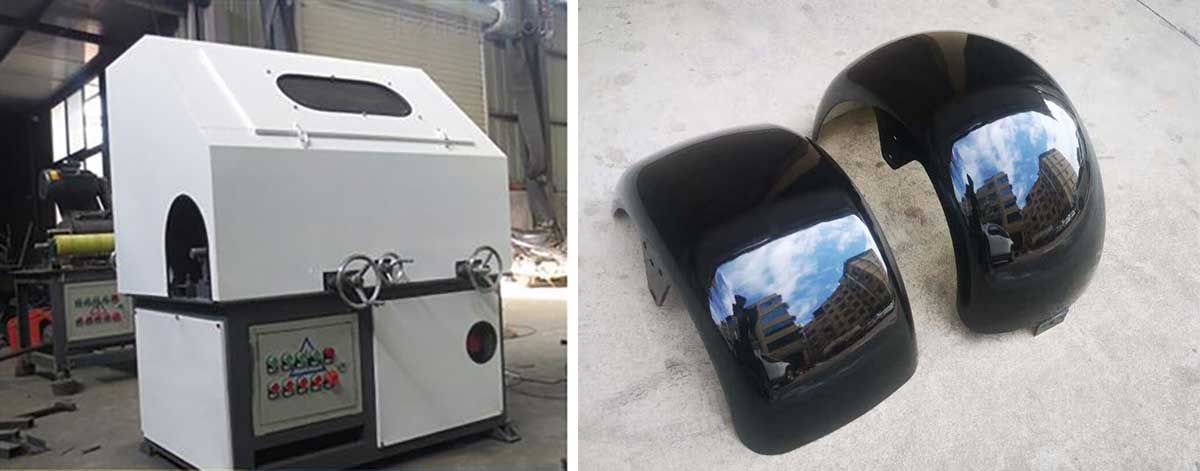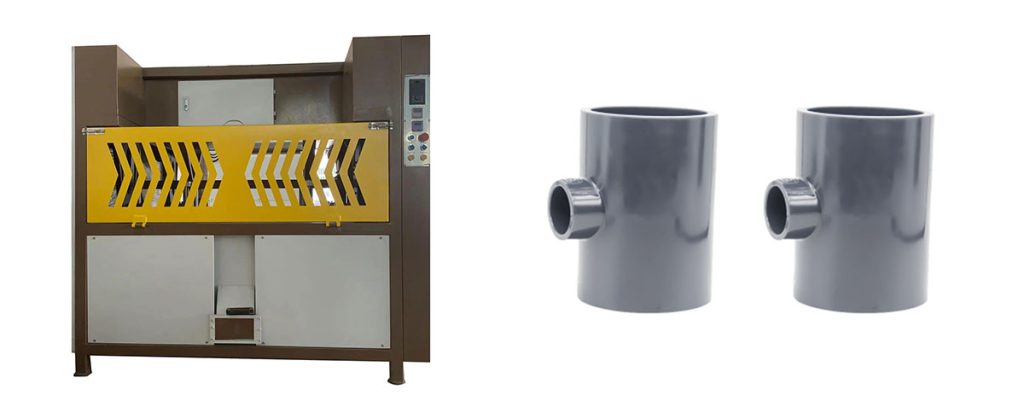

Plastic surfaces play a vital role in various industries, from automotive to consumer electronics. Achieving a high level of gloss not only enhances their aesthetic appeal but also reflects superior craftsmanship. However, wear resistance is equally important to ensure these surfaces withstand daily use without losing their quality. Plastic polishers have revolutionized surface treatment by offering precise tools to improve both gloss and durability. These innovations allow manufacturers to create products that excel in both appearance and performance.
Key Takeaways
- Gloss makes plastic surfaces shiny and more attractive to see.
- Wear resistance helps plastic parts stay strong during everyday use.
- Modern plastic polishers make surfaces shinier and tougher by fixing flaws.
- Cleaning and preparing plastic surfaces is key for great finishes.
- Using the right polishing method keeps them looking good and lasting long.
Understanding Gloss and Wear Resistance
Gloss in Plastic Surfaces
Definition and Importance of Gloss
Gloss refers to the ability of a surface to reflect light, creating a shiny and polished appearance. It plays a significant role in enhancing the visual appeal of plastic products. High gloss levels often indicate superior craftsmanship and attention to detail. In industries like automotive and consumer electronics, gloss contributes to the perceived value of a product. Beyond aesthetics, gloss can also impact functionality, as smoother surfaces are easier to clean and maintain.
Factors Affecting Gloss Levels in Plastics
Several factors influence the gloss levels of plastic materials:
- Surface texture determines how light reflects off the plastic. A smoother texture results in higher gloss.
- Material properties, such as the type of resin and additives, affect the final gloss level.
- Processing conditions, including temperature and pressure during molding, can lead to variations in gloss across the surface.
Inconsistent texture geometry, variations in wall stock, and inadequate venting during production can also cause uneven gloss. For example, thinner areas may appear glossier due to less pressure, while dull spots may form from poor venting.
Wear Resistance and Durability
What Wear Resistance Means for Plastic Components?
Wear resistance refers to a material’s ability to withstand damage caused by friction, abrasion, or repeated use. For plastic components, this property ensures that surfaces remain intact and functional over time. It is especially critical in applications like gears, bearings, and other moving parts where constant contact occurs.
Challenges Posed by Wear and Tear in Plastic Surfaces
Plastic surfaces face several challenges due to wear and tear. Friction can lead to scratches, reducing surface quality and performance. Over time, this degradation may compromise the structural integrity of components. Without adequate wear resistance, parts may require frequent replacements, increasing costs and downtime.
The Connection Between Surface Quality and Performance
Why Gloss and Wear Resistance Are Critical for Surface Quality?
Gloss and wear resistance are essential for maintaining surface quality. High gloss enhances the visual appeal, while wear resistance ensures durability. Together, these properties contribute to the overall performance of plastic components. A product with superior surface quality not only looks better but also lasts longer, reducing maintenance needs.
Applications Where These Properties Are Essential
Industries like automotive, aerospace, and consumer electronics rely heavily on gloss and wear resistance. In automotive interiors, glossy surfaces create a premium feel, while wear-resistant plastics ensure longevity. Similarly, electronic devices benefit from durable, high-gloss finishes that withstand daily use without losing their appeal.

The Role of Plastic Polishers
Enhancing Surface Quality with Plastic Polishers
How Advanced Polishers Improve Gloss and Smoothness?
Plastic polishers play a crucial role in achieving a high-gloss finish on plastic surfaces. These tools refine the surface finish by eliminating imperfections, such as scratches or uneven textures, that can dull the appearance. By using specialized polishing techniques, manufacturers can create a reflective surface that enhances the product’s aesthetic appeal. For example, diamond polishing is a method that uses fine abrasives to achieve exceptional smoothness and clarity, making it ideal for applications requiring a high-gloss appearance.
The Role of Precision in Achieving Consistent Results
Precision is essential when using plastic polishers to ensure consistent results across the entire surface. Variations in pressure or technique can lead to uneven gloss levels or missed imperfections. Modern polishing equipment often includes advanced features, such as adjustable settings and automated controls, to maintain uniformity. These innovations allow manufacturers to produce flawless surfaces efficiently, reducing the need for rework and ensuring a superior surface finish.
Improving Wear Resistance Through Polishing
Techniques for Reducing Surface Imperfections
Polishing techniques not only enhance gloss but also improve wear resistance by addressing surface imperfections. Methods like diamond polishing remove micro-scratches and other flaws that can weaken the material over time. A smoother surface finish reduces friction, which minimizes wear and tear during use. This is particularly important for components exposed to constant movement or contact, such as gears or medical devices.
How Polishing Enhances Durability and Lifespan?
Polishing extends the lifespan of plastic components by creating a more durable surface. A polished surface resists abrasion and maintains its integrity under stress. For instance, flame polishing is a technique that uses heat to smooth edges and improve clarity, making it suitable for transparent plastics. By enhancing both the appearance and durability, plastic polishers contribute to the production of long-lasting, high-quality products.
Innovations in Plastic Polishing Technology
Recent Advancements in Polishing Tools and Methods
Recent innovations in plastic polishing have introduced more efficient and precise methods. Traditional techniques like buffing and flame polishing remain popular for their simplicity and effectiveness. However, newer methods such as vapor polishing and optical machining offer advanced capabilities. Vapor polishing is particularly effective for clear plastics, delivering a flawless high-gloss finish. Optical machining, on the other hand, provides true optical clarity, making it ideal for high-precision applications.
Benefits of Adopting Cutting-Edge Polishing Equipment
Adopting modern polishing equipment offers several advantages. Advanced tools improve efficiency by reducing manual effort and increasing production speed. They also enhance the quality of the surface finish, ensuring a consistent high-gloss appearance. Additionally, these tools are versatile, accommodating various materials like acrylic, polycarbonate, and polysulfone. By investing in cutting-edge technology, manufacturers can meet the growing demand for durable and visually appealing plastic products.
Key Techniques and Best Practices
Preparing Plastic Surfaces for Polishing
Importance of Cleaning and Pre-Treatment
Proper preparation is essential for achieving high-quality surface finishes. Cleaning and pre-treatment remove contaminants that could interfere with the polishing process. Dust, grease, or residues can lead to polishing defects, such as uneven gloss or scratches. A clean surface ensures that polishing techniques deliver consistent and superior results.
Tools and Materials for Effective Preparation
Preparing plastic surfaces requires specific tools and materials. A soft cloth or sponge works well for applying cleaning solutions. For best results, follow these steps:
- Mix a small amount of mild soap or dish detergent with warm water.
- Apply the soapy water to the surface using a soft cloth or sponge, ensuring complete coverage.
- Rinse the surface with clean water to remove any soap residue.
- Use a microfiber cloth to pat the surface dry, preventing water spots.
These steps create a smooth and clean base, ready for polishing.
Selecting the Right Plastic Polishers
Matching Equipment to Specific Plastic Types
Choosing the right plastic polishers depends on the material and desired finish. Different techniques suit various plastics:
- Flame polishing works well for select materials, providing a clear surface.
- Optical machining achieves fine finishes on most plastics.
- Vapor polishing enhances clarity in transparent plastics like polycarbonate.
Materials such as acrylic, polycarbonate, and Ultem respond well to these techniques, making them ideal for polishing.
Factors to Consider for Optimal Surface Quality
Several factors influence the choice of polishing equipment. The type of plastic, the desired gloss level, and the application requirements all play a role. Advanced tools, such as metal polishers, offer precision and versatility, ensuring consistent results across different materials. Selecting the right equipment minimizes polishing defects and enhances durability.
Polishing Techniques for Superior Results
Step-by-Step Guide to Achieving High Gloss
Achieving a high-gloss finish requires careful execution of polishing techniques. Follow these steps:
- Begin with wet sanding to reduce heat buildup and prevent surface damage.
- Use progressively finer grits to avoid scratching the surface.
- Remove debris with a wet cloth to ensure even sanding.
These steps prepare the surface for advanced polishing methods.
Tips for Balancing Gloss and Wear Resistance
Balancing gloss and wear resistance involves selecting the right technique for the application. Buffing provides a smooth finish but may lack clarity. Flame polishing delivers exceptional gloss for transparent plastics. Optical machining ensures true optical finishes, ideal for demanding applications. By choosing the appropriate method, manufacturers can achieve both aesthetic appeal and durability.
Common Challenges and Solutions
Addressing Surface Imperfections
Common Issues Like Scratches and Uneven Finishes
Plastic surfaces often face challenges such as scratches, dents, and uneven finishes. These imperfections can arise during manufacturing or from regular use. Scratches reduce the aesthetic appeal and compromise the functionality of the surface. Uneven finishes, on the other hand, can disrupt the uniformity of light reflection, making the surface appear dull or inconsistent.
Solutions for Achieving a Flawless Surface
To address these issues, manufacturers employ advanced techniques like wet sanding and mirror processing. Wet sanding minimizes heat buildup, which prevents further damage to the surface. Using progressively finer grits ensures a smooth and even finish. For deeper scratches, vapor polishing can restore clarity and gloss, especially for transparent plastics. Regular inspection of polycarbonate parts for wear or discoloration also helps maintain surface quality. A clean work environment and proper training for operators further reduce the risk of imperfections.
Avoiding Over-Polishing
Risks of Over-Polishing and How to Mitigate Them

Over-polishing can lead to thinning of the material, reducing its structural integrity. It may also cause overheating, which can distort the plastic or create unwanted blemishes. To mitigate these risks, operators should monitor the polishing process closely. Stopping once the desired finish is achieved prevents unnecessary wear on the material. Using wet sanding instead of dry sanding also helps control heat buildup, preserving the surface quality.
Maintaining Durability While Enhancing Gloss
Balancing durability and gloss requires precision. Techniques like flame polishing deliver a high-gloss finish without compromising the material’s resistance to wear. Polished molds should be handled with care to avoid overworking the surface. Properly calibrated equipment ensures consistent results, enhancing both the durability and appearance of the product.
Maintaining Plastic Polishers
Importance of Regular Maintenance for Equipment
Regular maintenance of plastic polishers ensures consistent performance and extends their lifespan. Neglecting maintenance can lead to inefficiencies, safety hazards, and reduced surface quality. Operators should prioritize cleaning and inspecting equipment after each use to prevent wear and tear.
Best Practices for Extending Tool Lifespan
To maximize the lifespan of polishing tools, manufacturers should follow these practices:
- Schedule preventative maintenance to identify potential issues early.
- Calibrate equipment regularly to maintain precision and safety.
- Clean tools thoroughly to prevent debris buildup.
- Replace worn parts with high-quality OEM components.
- Train operators in proper usage and maintenance techniques.
By adhering to these practices, manufacturers can ensure their tools remain effective and reliable over time.
Conclusion
Achieving superior gloss and wear resistance is essential for enhancing the performance and longevity of plastic surfaces. These properties depend on factors like material composition, surface finish, and environmental conditions. For instance, polymers such as Nylon and PTFE offer unique wear characteristics, while smoother surfaces reduce friction and extend durability. Advanced techniques like mold polishing address these needs effectively.
Modern plastic polishers transform surface quality by delivering long-term benefits. Polished plastics exhibit exceptional durability, optical clarity, and heat resistance. They are also lightweight, making them practical for various applications. Mold polishing ensures consistent results, creating products that excel in both aesthetics and functionality.
Adopting advanced polishing techniques empowers manufacturers to meet industry demands. Mold polishing not only enhances surface quality but also reduces maintenance needs. By embracing these innovations, industries can produce high-quality, durable, and visually appealing plastic components.
